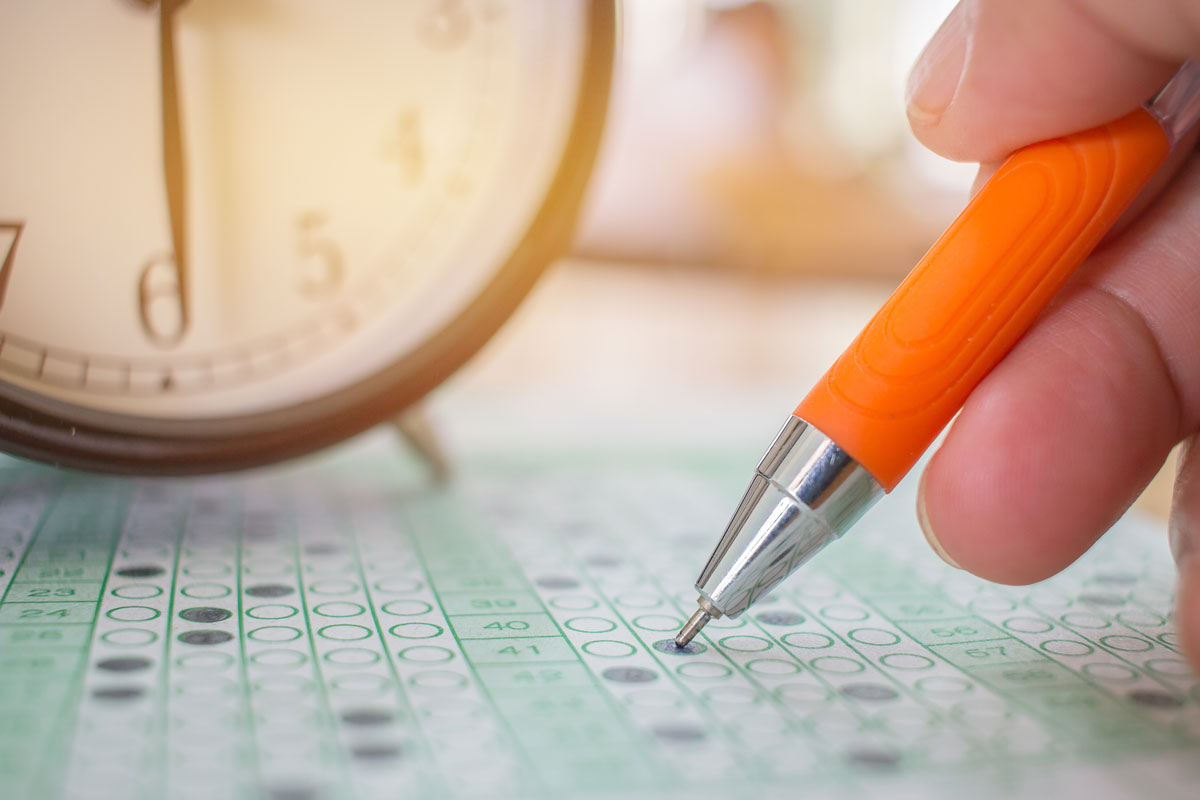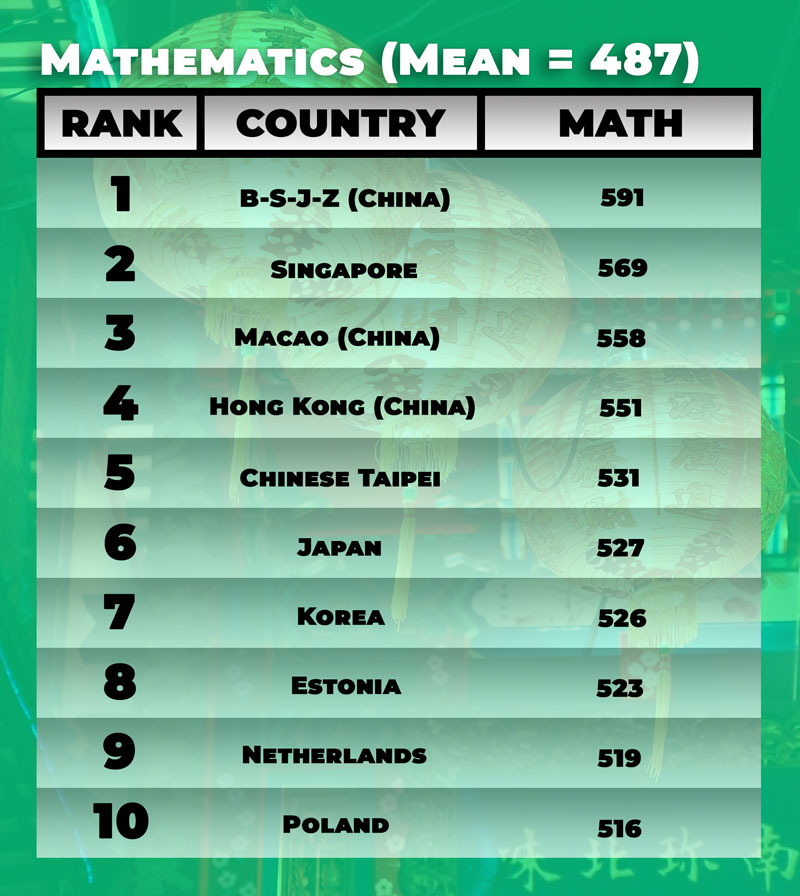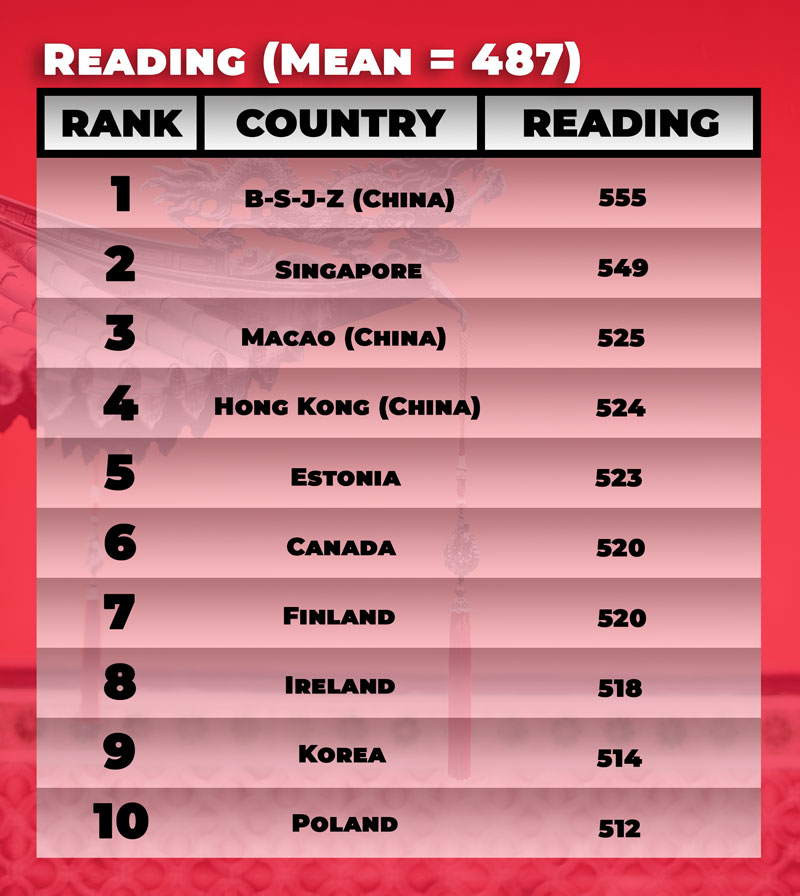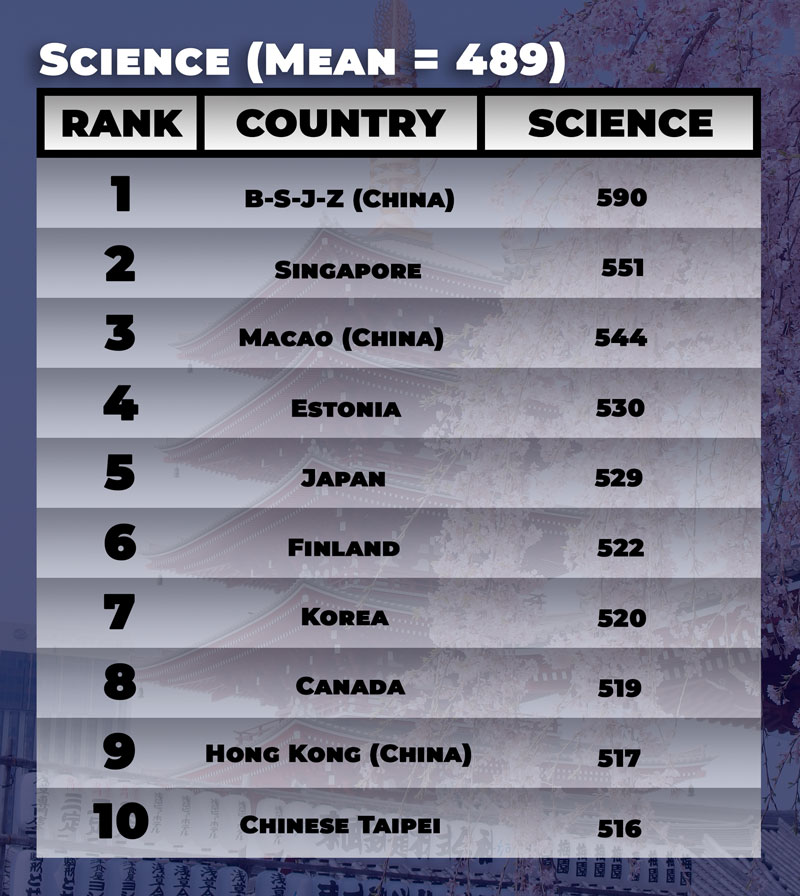PISA Results Are In: What are the Big Takeaways?

The 2018 PISA (Programme for International Student Assessment) results are in, and the top results were once again dominated by mostly Asian countries. PISA is an examination coordinated by the Organization for Economic Cooperation and Development (OECD), an intergovernmental economic membership of countries based in Paris, France. The PISA examination was first introduced in 2000 and tests 15-year-olds across the world in reading, mathematics, and science.
The Fall 2018 PISA results included approximately 600,000 examinations administered across 79 countries. Mainland China, represented by the provinces of Beijing, Shanghai, Jiangsu, and Zhejiang (B-S-J-Z), scored the highest in reading, mathematics, and science. Other Asian countries also scored highly on the PISA examinations, including Singapore, Chinese Taipei (Taiwan), Korea, and Japan. Perhaps somewhat as a surprise, Estonia, the small country in northern Europe with a total population of just over 1 million, scored quite well by establishing average scores within the top 10 on all three major subjects. The United States placed #13 on the Reading examination, #37 on the Mathematics examination, and #18 on the Science examination.



In addition to identifying average mean scores for subject tests across various countries, the PISA examination also investigated and compared other factors that affect student learning. Some other notable findings include:
- 23% of students reported acts of bullying against them several times a month.
- Only 10% of students classified as disadvantaged scored in the top quarter percentile of reading performance in their country.
- 1 in 4 students have difficulty with basic aspects of reading, such as identifying the main idea of a passage.
The PISA methodology and test is not without its fair share of critics. The results from Mainland China have been called into question, and other general criticisms of PISA include allegations of non-representative sample size and whether or not the test results fundamentally correlate to students’ future success. Still, in an increasingly global economy, the PISA serves as an important indicator and reference tool for governments and school systems to evaluate their effectiveness and practices across a broad spectrum.
This article is available and can be accessed in Spanish here.









